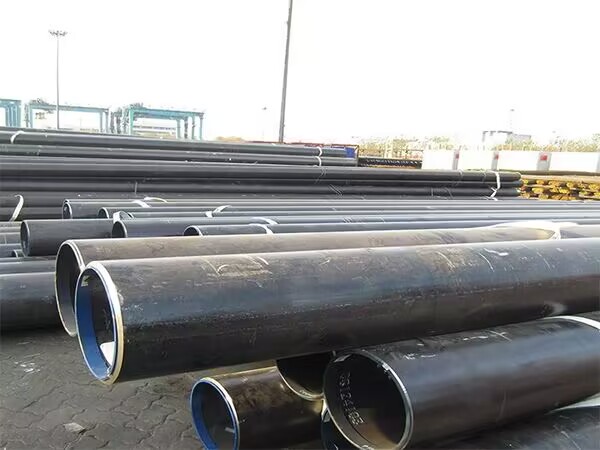Classification of seamless carbon steel pipes
Seamless carbon steel pipes are industrial pipelines made from seamless carbon steel, primarily containing carbon, silicon, manganese, phosphorus, sulfur, and other elements. They have high strength and durability, making them suitable for various engineering applications. Their excellent chemical stability, machinability, low cost, and ease of manufacturing also make them an ideal choice for many production processes. Below are the main classifications and characteristics of seamless carbon steel pipes:

1. Classification by material
(1) Ordinary Carbon Steel Pipes: Made from common carbon structural steel like Q235 and Q275. They are cost-effective with average strength and toughness, suitable for general engineering structures and fluid transportation.
(2) High-Quality Carbon Steel Pipes: Made from high-quality carbon structural steel such as 20# and 45#. These pipes offer higher strength, hardness, and toughness, with good machinability, suitable for mechanical structural components and transmission parts.
(3) Carbon Alloy Steel Pipes: Primarily made of 16Mn, Q345, etc., containing small amounts of elements like Mn, Si, and V. They have higher strength and toughness, suitable for load-bearing structures in bridges, engineering machinery, etc.
2. Classification by carbon content
(1) Low-Carbon Steel Pipes: Carbon content ≤ 0.25%. These pipes have good toughness, excellent weldability, and high plasticity, suitable for fluid transport pipelines and general structural pipelines like water supply pipelines and building support components.
(2) Medium-Carbon Steel Pipes: Carbon content between 0.25%-0.60%. These pipes offer high strength and wear resistance but have lower weldability, toughness, and plasticity, suitable for making mechanical parts, bearings, and equipment components.
(3) High-Carbon Steel Pipes: Carbon content ≥ 0.60%. These pipes feature excellent hardness, wear resistance, and high strength, but they are more brittle. They are suitable for tools, cutting instruments, and high-strength mechanical structural components.
3. Classification by manufacturing process
(1) Hot-Rolled Seamless Pipes: Made by heating steel billets and rolling them into round pipes. Suitable for large-diameter, thick-walled pipes. They have lower production costs and high strength, used in high-temperature and high-pressure environments such as high-pressure pipelines, engineering machinery, and pressure vessels. The downside is rough surface finish and lower dimensional accuracy.
(2) Cold-Rolled Seamless Pipes: Made by further rolling hot-rolled pipes. Compared to hot-rolled seamless pipes, cold-rolled pipes have better surface finish and higher precision, suitable for small-diameter precision pipes. However, they have lower toughness and higher brittleness.
(3) Cold-Drawn Seamless Pipes: Manufactured through the cold-drawing process to enhance pipe precision and strength. They are high-strength, high-precision, and pressure-resistant, widely used in industrial pressure pipelines and automotive hydraulic systems.
4. Classification by application
(1) Seamless Carbon Steel Pipes for Fluid Transport: Mainly used for transporting oil, natural gas, water, and other liquid and gas media, with good pressure resistance and sealing performance.
(2) Structural Seamless Carbon Steel Pipes: High strength and rigidity, capable of bearing heavy loads. Primarily used in construction structures and machinery manufacturing as support or load-bearing components.
(3) Boiler Seamless Carbon Steel Pipes: Divided into low-medium pressure boiler pipes and high-pressure boiler pipes, featuring high-temperature resistance, high-pressure resistance, and oxidation resistance. Widely used in power station boilers and industrial boilers.
(4) Seamless Carbon Steel Pipes for Petroleum Cracking: Used in cracking units of petrochemical equipment, suitable for high-temperature, high-pressure, and corrosive media, with excellent performance in heat resistance, pressure resistance, and corrosion resistance.
Read more: What is seamless carbon steel pipe? or Mild steel, medium carbon steel, high carbon steel difference
